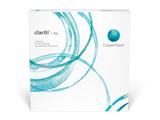
Around age 40, our eyes begin to lose the ability to focus on objects up close thereby gaining the need for reading glasses. If the idea of having to carry around and put on readers every time you look a newspaper or peruse a menu sounds unpleasant, there are contact lenses specifically designed for presbyopia called “multifocal contact lenses.” Here is some information on these innovative lenses:
Monovision vs. Multifocal
Originally, the only way to wear contacts for presbyopia was by wearing a lens for near vision on one eye and a lens for distance vision on the other– a technique called monovision. It is still in use today, however, it is not the optimal way to correct vision and results in a loss of binocular vision (two eyes working together). Multifocals provide multiple focus points allowing for sharpness at a variety of distances.
Differing Multifocal Designs
- Multifocal lenses come in three basic designs: concentric bifocal, alternating image, and simultaneous image designs.
- Concentric bifocal multifocals have near correction in a circle at the center of the lens surrounded by distance correction, or visa versa.
- Alternating image, also called translating, designs are like mini bifocals with distance vision up top and near vision at the bottom and are only available in gas permeable lenses.Simultaneous image designs have both distance and near vision in front of the pupil at the same time.
Balanced Progressive Technology
CooperVision’s Biofinity multifocal contact lenses offer a new level of vision quality thanks to Balanced Progressive Technology, an advanced design containing multiple zones of vision correction in both lenses. According to a study by Foresight Regulatory in partnership with leading optometrists, Balanced Progressive Technology, when compared to another leading brand multifocal, allows for greater fine-tuning of the fit and the ability to make small, incremental changes in vision.
There used to be so little choice in soft multifocal lenses, but today you have plenty of options. CooperVision makes a variety of multifocals including a 1-day, a toric lens, and even a lens designed specifically for those just starting to have trouble with close-up vision. When starting with any multifocal lens, there is an adjustment period while your brain gets used to it, but many consider it a small price to pay for leaving the inconvenience of reading glasses behind.





